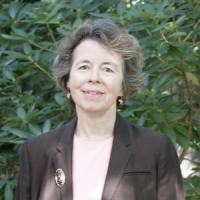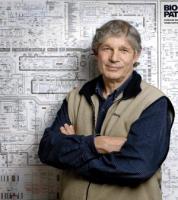Serendip is an independent site partnering with faculty at multiple colleges and universities around the world. Happy exploring!
Reply to comment
Remote Ready Biology Learning Activities

Remote Ready Biology Learning Activities has 50 remote-ready activities, which work for either your classroom or remote teaching.
Narrative is determined not by a desire to narrate but by a desire to exchange. (Roland Barthes, S/Z)
What's New? Subscribe to Serendip Studio
Recent Group Comments
-
alesnick
-
Richard L Stover (guest)
-
alesnick
-
Anne Dalke
-
alesnick
-
Paul Grobstein
-
Paul Grobstein
-
Paul Grobstein
-
alesnick
-
bolshin
Recent Group Posts
A Random Walk
Play Chance in Life and the World for a new perspective on randomness and order.
New Topics
-
10 weeks 1 day ago
-
10 weeks 2 days ago
-
10 weeks 5 days ago
-
10 weeks 5 days ago
-
10 weeks 5 days ago


Against forced agreement
I went to two sort-of curious/not-entirely-satisfactory talks this past week about the intersections between science and art. Being puzzled-and-dissatisfied by each of them, differently, I thought I might use this space to try to tease out the puzzles a bit...
 On February 3, Catherine Elgin, a philosopher of education @ Harvard, gave one of the talks in the BMC Philosophy Department Colloquia series, in which she argued that "the arts function cognitively": they contribute to understanding (which she defined as a "'reasonable' system of cognitive commitments that 'hold together'"). She developed this argument (as one of the student interlocutors acutely pointed out during the q&a) by attributing value to art, not because it does anything unique or different, but because it enables the already recognized values of science.
On February 3, Catherine Elgin, a philosopher of education @ Harvard, gave one of the talks in the BMC Philosophy Department Colloquia series, in which she argued that "the arts function cognitively": they contribute to understanding (which she defined as a "'reasonable' system of cognitive commitments that 'hold together'"). She developed this argument (as one of the student interlocutors acutely pointed out during the q&a) by attributing value to art, not because it does anything unique or different, but because it enables the already recognized values of science.
 The next afternoon I went to a Cooper Series event @ Swarthmore: a talk by Stuart Kauffman of the Santa Fe Institute on "Examining the sacred" that I thought tried to do for science and religion what Elgin had tried to do for science and art: make them one. Kauffman argued with great specificity that the universe, having "made all possible atoms," can never "make all possible molecules" (that is, all possible combinations of atoms). It is thus, he said, "grotesquely ... non-repeating," offers a "space of the possible" that will always be "larger than what happens." Not only can we "not know what will happen," we can "not even know what can happen." Unable to "define the sample space" that is the biosphere, we can know only that "unforeseeable circumstances" and "novel possibilities" will emerge. Recognizing such a "creative universe," Kauffman concluded, can give us a shareable sense of the sacred," something we all --scientific and religious folk alike--can call "God."
The next afternoon I went to a Cooper Series event @ Swarthmore: a talk by Stuart Kauffman of the Santa Fe Institute on "Examining the sacred" that I thought tried to do for science and religion what Elgin had tried to do for science and art: make them one. Kauffman argued with great specificity that the universe, having "made all possible atoms," can never "make all possible molecules" (that is, all possible combinations of atoms). It is thus, he said, "grotesquely ... non-repeating," offers a "space of the possible" that will always be "larger than what happens." Not only can we "not know what will happen," we can "not even know what can happen." Unable to "define the sample space" that is the biosphere, we can know only that "unforeseeable circumstances" and "novel possibilities" will emerge. Recognizing such a "creative universe," Kauffman concluded, can give us a shareable sense of the sacred," something we all --scientific and religious folk alike--can call "God."
I wanted to push Elgin on this point. I think it's the case (as she argued it was) that science places a higher value than art does on intersubjective agreement. I also think it's the case that -- because art doesn't build on previous results in the way science does -- it doesn't need (for instance) to "force agreement by forcing a limit to precision" (in measurement, say). Further, I think it's the case that works of art actually seek not to align themselves with what has been done, but rather to diverge from past works, to be unique, and original.
Here's where I got stuck. What then would be the "system" of understanding to which art contributes? The totality of a work? Its genre, period, art qua art? How might "that which diverges" contribute to that which "holds together"? So much of art tries not to be "exemplary" of larger claims (as Tolstoy says in the first line of Anna Karenina, "Happy families are all alike; every unhappy family is unhappy in its own way" -- and it is of course this unique unhappiness that he goes on to chronicle).
So I guess that's where I was left: wanting to highlight art's resistance to finding the similar, and -- more largely -- resisting any forced similarity between the actions of art and those of science.
And so I found myself again resisting: do we really need such a story in common: a single shared story? I'd be interested to hear how others think of these efforts to find shared language (to agree even on single shared words, like "understanding" and "God") for divergent activities.